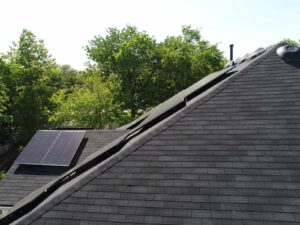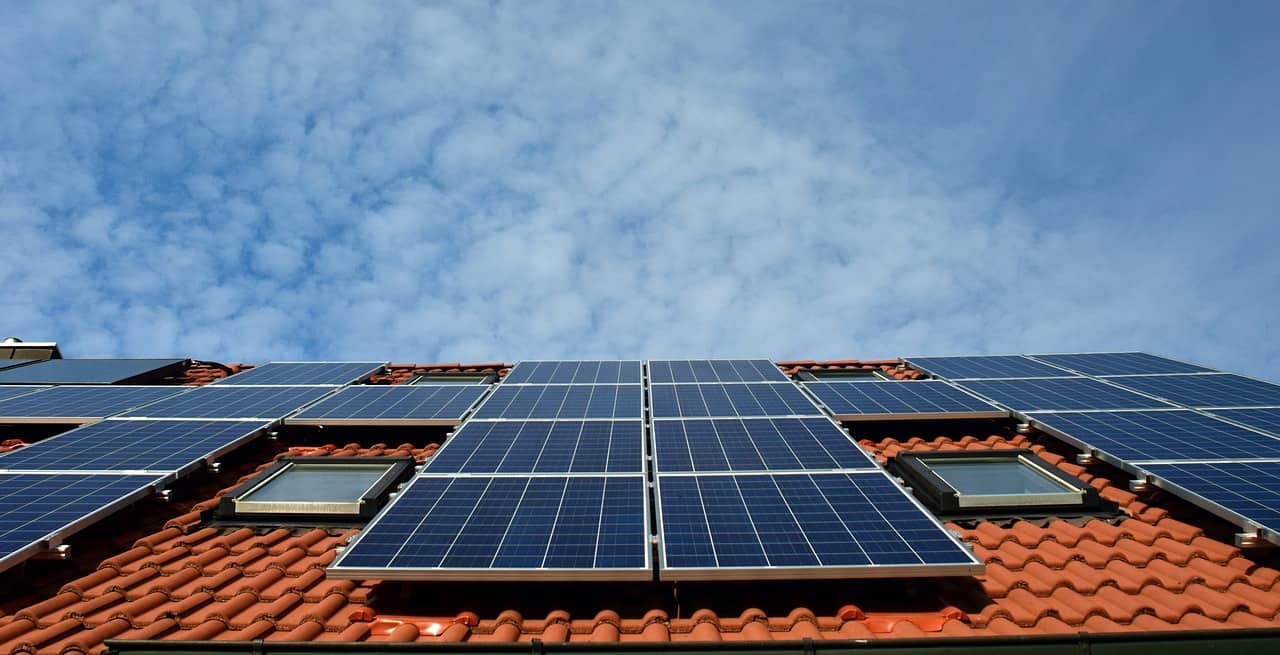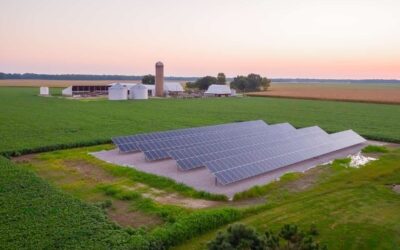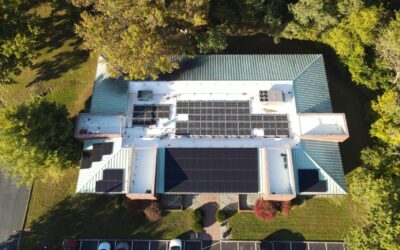
Are you considering supplementing your home’s energy with or switching entirely to solar power? Installing a home solar system can have tremendous benefits in terms of cost savings, home value and peace of mind. Before making the investment in an alternative power source, consider the potential advantages for your home and which installation method is best for getting the most out of your solar array.
Solar Power Statistics You Should Know
Solar panel installation can save you tens of thousands of dollars over the life of the system, even when factoring in the cost of equipment and installation. Over the past decade, installation costs have gone down 70 percent, and the overall price of solar has fallen 99.2 percent since 1977. A solar panel cost calculator can show you the expected price to install a system in your area.
A trend toward lower prices means a greater return on your investment, especially as the efficiency of solar panels increases. Between the boost in property value afforded by adding or switching to solar and the savings on energy bills, you can get a return of more than 200 percent on what you pay for equipment and installation. If you choose to remain tied to the grid, net metering offers additional credits for any extra energy your system generates.
The average solar panel can produce between 290 and 360 watts per hour in full sunlight. Since the typical U.S. residence averages about 897 kilowatt hours per month, it takes between 28 and 34 panels to completely power a home. Every kilowatt of power produced using solar prevents:
• 150 pounds of coal from being burned
• 300 pounds of carbon dioxide from being released
• 105 gallons of water from being used
It’s easy to see how even a small array of solar panels can benefit both your home and the environment. You don’t have to make a complete switch to start seeing positive effects.
Benefits of Installing Residential Solar Panels
Investing in solar for house use brings a range of perks, many of which lower the cost of installing and maintaining the system. Other benefits reduce your carbon footprint by minimizing the amount of unrenewable energy on which your home relies.
Home Value
According to the National Renewable Energy Laboratory, every $1 you save on your energy bill by using solar can translate to a $20 increase in the value of your home. The exact amount of the increase depends on:
• Where you live
• Your home’s current value
• The size of the installation
An average 5-kilowatt system can increase property value by $4 per watt in California and $3 per watt elsewhere in the U.S. Other statistics show an increase of $5,911 for every kilowatt of solar installation to be the average for the country.
Environmental Effects
Solar power is renewable and available to just about every homeowner. Adding residential solar panels means using few to no fossil fuels, so you help to reduce emissions of:
• Nitrous oxide
• Sulfur dioxide
• Particulate matter
Because of this lower rate of emissions, solar power has the potential to improve health for those with respiratory sensitivities. Solar panels also generate no noise pollution, an important consideration in a world where noise is a constant part of daily life.

Security
If you’re on the grid, what do you do when the power goes out? You need a backup energy source like a generator to ensure you retain access to the essentials. With solar power, you never have to worry about where your electricity is going to come from. The sun isn’t about to stop shining any time soon, and no company has control over the power it generates. The investment you make in your home solar system is all you have to pay to continue drawing on this consistent source of natural energy.
Incentives
Buying solar panels allows you to take advantage of several credits and other incentives to reduce the cost of purchase:
• Investment tax credit (ITC), a 30 percent deduction on your taxes
• Applicable state tax credits
• Cash rebates from the state, your municipality, the utility company or a pro-solar organization
• Solar renewable energy certificates (SERCs) purchased by utilities to help meet their state-mandated quotas for solar-generated power output
• Performance-based incentives (PBI), credits given in dollars per kilowatt hour of energy produced
Note these incentives apply to the owner of the solar power system, so you don’t get the same credits if you choose to lease your equipment.
What to Consider Before Solar Panel Installation
Solar power isn’t right for every home. If you’re located in an area with few sunny days or your home is heavily shaded, a solar array may not be able to generate enough power to make it worth the investment. The efficiency rating of the best panels on the market is about 22.5 percent, but the average is 15 to 17 percent. This means only a fraction of the sun hitting the panels is converted into electricity, so you need to have an area on your roof where your solar array would be in full sunlight for an adequate stretch of time every day.
A roof in good condition and at the proper angle is required to support an efficient collection of solar panels. Most solar arrays do best at angles of 30 to 45 degrees and installation costs may be significantly higher if the roof needs repairing beforehand.
Roof space and budget can limit the amount of energy you can get from solar. Different types of panels have different efficiency levels, so you need to check the wattage ratings on equipment to determine how many panels would be required to generate significant energy savings. Look into all the possible credits and incentives to find out how much of your investment you can recoup in addition to the reductions in your energy bills. Since costs for installation have been decreasing steadily, you may be able to get a better deal in the future if you can’t afford a system now. Use a solar panel cost calculator to determine the best course of action.
Whether you install now or decide to wait, putting in solar panels requires the proper permits. Most installations need at least a building and an electrical permit, but your state or municipality may ask for additional paperwork.

Choosing a Solar Power System for Your Home
Three types of solar panels are available for residential use:
• Microcrystalline panels are made from silicon and have a telltale deep black color and rounded cell construction. The purity of the material makes these your most efficient choice.
• Polycrystalline panels are made using melted silicon poured into square cell molds. Performance in high heat and low light can be poor, and the material is less efficient than microcrystalline when converting sunlight to power.
• Thin film panels capture energy with materials like cadmium telluride, amorphous silicon and organic photovoltaic cells layered on top of a substrate. Although these perform better than polycrystalline, the lower efficiency means the panels require more space to produce the same amount of power.
Solar panels typically last between 20 and 25 years and should retain 80 to 92 percent of their original efficiency during this time.
Any panel type may be part of a grid-tied or off-grid system. Grid-tied solar keeps your house connected to the traditional power grid so that you can switch between power sources as necessary. An off-grid system puts your house completely on solar power, but this isn’t always an affordable option. Taking advantage of a grid-tied system gives you a backup source while still allowing you to reduce your reliance on unrenewable resources.
Is DIY Right for Home Solar Panels?
Many people choose to perform solar panel installation on their own, and this option is often cheaper. Professional installation can make up as much as 10 percent of the total cost of a home system, whereas you can buy a DIY kit online or from a local hardware store without any additional fees. However, the equipment in these kits may be of lower quality than what you’d get from professional solar installers, and you have to rely on your own level of skill to perform the installation.
DIY home solar installation also requires completing all the permit paperwork yourself and researching the incentives available. It’s possible you could miss a cost-saving measure without the help of a professional. The installation itself isn’t as straightforward as some other DIY home projects, so you need to be prepared to learn new techniques.
In light of these potential drawbacks, the DIY method is best only if you’re comfortable and familiar with electrical installations and understand what’s necessary to comply with local regulations, including whether your system can be tied to the grid.
Professional installation adds the benefits of experience, high-quality equipment and warranty coverage. Local solar companies can ensure the system being installed will meet regulations without hassle and get you up and running faster than you can manage on your own.

How to Set Up a Home Solar System
Should you decide DIY is the way to go with your solar array, start the process by meeting with a knowledgeable consultant who can help you determine the right type and size of system for your needs. This prevents expensive mistakes and unnecessary delays in the installation process.
Get familiar with the ins and outs of solar power and the different systems available before settling on what equipment to use. Remember, you need more than just panels; a full system requires strong support and the right electrical hardware for a successful installation.
Pay attention to detail during the process of putting up your solar panels, and take care to follow the proper steps:
• Plan the layout of the support system
• Install the supports, and fasten on the rails for the panels
• Measure diagonally across from top rail to bottom rail to check for even placement
• Adjust as necessary for even mounting
• Install the center rail
• Run the electrical conduit and wiring
• Install a micro inverter and copper grounding wire for each panel
• Connect the solar arrays
• Place the panels in the supports and secure them
• Finish the electrical wiring in the basement or wherever your power box is located
Before being connected and used, grid-tied systems must be evaluated for safety and compliance by the appropriate authorities. Hiring a professional to inspect and maintain your solar array ensures it remains efficient and doesn’t suffer damage requiring replacement.
Working with Local Solar Companies
If you choose professional installation over DIY, you want a well-qualified solar installer with knowledge and experience. Research solar companies, and look for:
• North American Board of Certified Energy Practitioners (NABCEP) certification
• Reliable references
• Years of experience
• Familiarity with the types of solar arrays available
The company you choose will start the process by sending someone to evaluate your home to determine the right size for your system and assess the angle of your roof along with any potential barriers to optimal efficiency. Once the details have been worked out, the installer will give you a contract or purchase agreement to sign.
An engineer must visit your home next and make sure the roof and electrical panel are ready to support solar power. If not, you may need to make repairs or upgrades before the array can be installed. Local solar companies also help you with the paperwork for permits and incentives and may be able to find additional discounts of which you weren’t aware.
With the paperwork in place, the installer can order the equipment and get ready for the installation. It takes between one and three days to prepare the roof, put in the wiring and mount the panels. Grid-tied systems must be inspected by your utility provider or a local official prior to connection and operation.
Both DIY and professionally installed solar for house use have benefits you can reap for the life of the system. Knowing you always have a reliable power source and you’ll more than recoup your investment if your system is maintained properly provides peace of mind. Do your research, work with knowledgeable professionals and enjoy the perks of using a renewable energy source to power your home.





